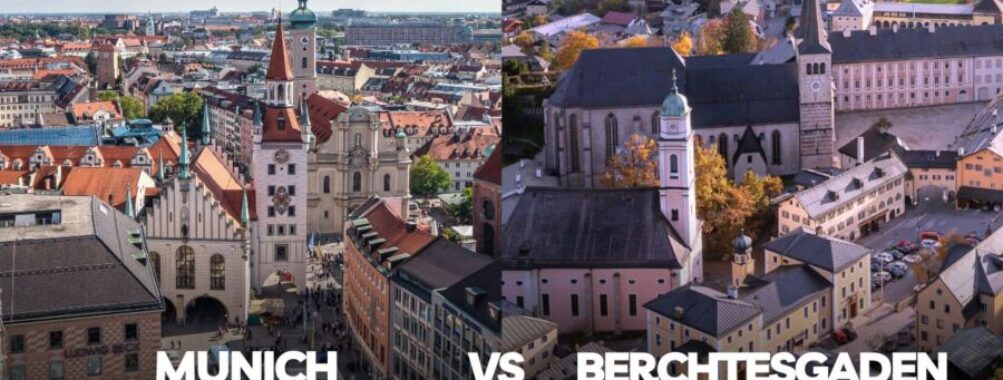
Munich vs Berchtesgaden: 7 Stunning Differences Between Bavaria’s Urban Hub and Alpine Gem
When choosing between Munich and Berchtesgaden for your German adventure, you choose between two very different experiences. Munich offers the buzzing energy of Bavaria’s capital with its beer halls, museums, and urban attractions. Berchtesgaden, by contrast, is a charming small town nestled in the Alps with breathtaking mountain scenery.
Combining the two destinations creates the perfect Bavarian experience for travelers seeking both city excitement and natural beauty. Munich is an excellent base for day trips, while Berchtesgaden offers a more intimate Alpine retreat with its salt mines, Lake Königssee, and the historic Eagle’s Nest.
The travel time between these German gems is about 2 hours by train or car, making it possible to visit Berchtesgaden as a day trip from Munich. However, spending at least one night in Berchtesgaden allows visitors to fully appreciate its natural wonders without rushing back to the city.
Contents
- Overview of Munich
- History and Culture
- Main Attractions
- Local Cuisine and Beer Gardens
- Exploring Berchtesgaden
- Berchtesgaden National Park
- Historical Landmarks
- Outdoor Activities
- Transportation Options
- Train Travel in Bavaria
- Bus Networks
- Navigating Local Transport
- Accommodation and Lodging
- Staying in Munich
- Berchtesgaden Retreats
- Day Trips and Excursions
- From Munich to the Countryside
- Berchtesgaden to Surrounding Regions
- Local Experiences
- Exploring Munich’s Beer Gardens
- Berchtesgaden’s Unique Offerings
- Weather and Climate
- Best Time to Visit Munich
- Berchtesgaden’s Seasons
- Insider Tips and Recommendations
- Frequently Asked Questions
- What are the main differences between sightseeing opportunities in Munich and Berchtesgaden?
- Is staying in Munich or Berchtesgaden better for a more authentic Bavarian experience?
- What transportation options are available for traveling between Munich and Berchtesgaden?
- How does the historical significance of Munich compare to that of Berchtesgaden?
- Can one easily visit the Eagle’s Nest in Munich, or is Berchtesgaden a better base?
- What unique cultural experiences can one expect when choosing between a stay in Munich and Berchtesgaden?
- More Travel Guides
Overview of Munich
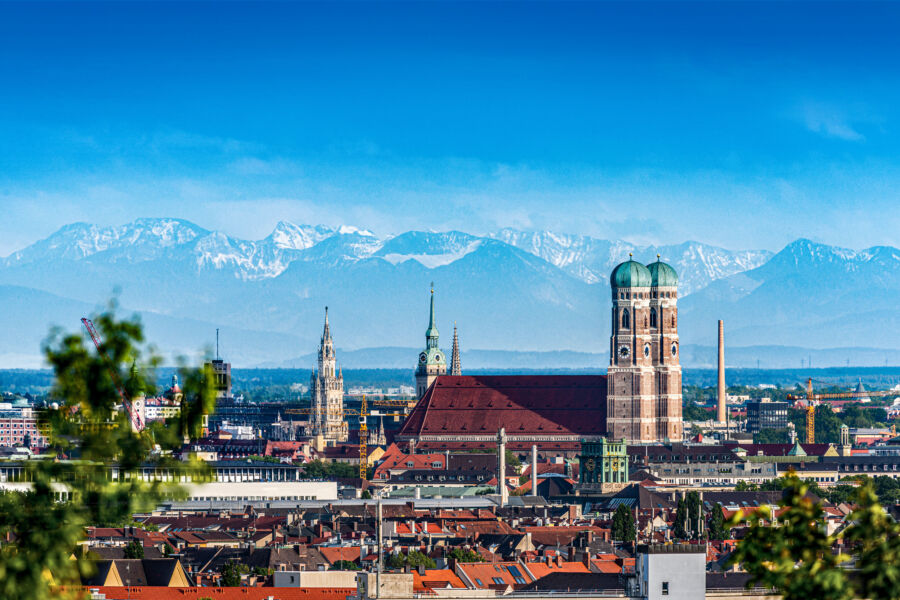
Munich, Germany’s southern gem, blends historic charm with modern flair. The Bavarian capital offers magnificent architecture, world-class museums, sprawling parks, and a vibrant beer culture that attracts visitors year-round.
History and Culture
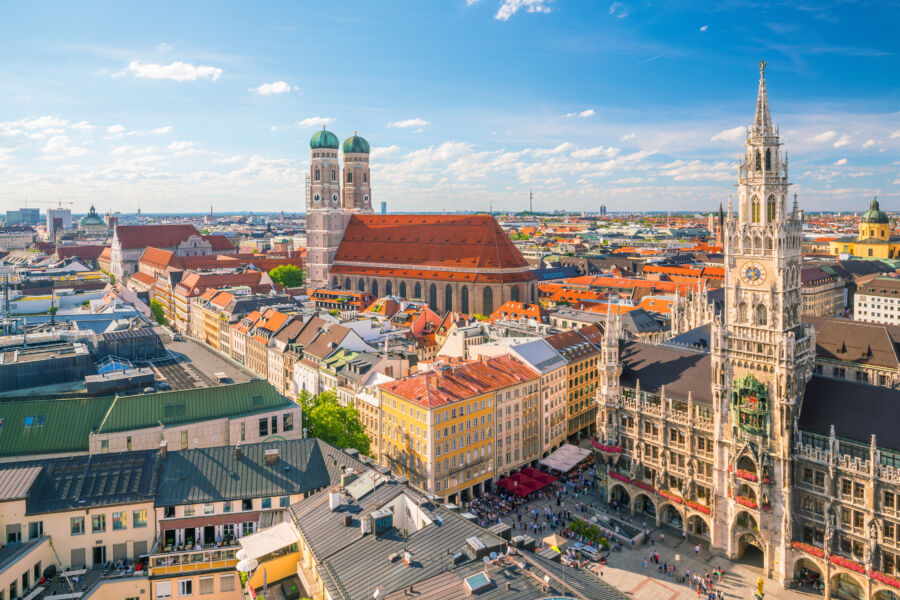
Munich was founded in 1158 by Henry the Lion, Duke of Saxony. The city’s rich history is visible in its preserved medieval streets and buildings. The Wittelsbach dynasty shaped Munich for over 700 years, leaving architectural treasures like the Residenz palace behind.
During the 19th century, King Ludwig I transformed Munich into a cultural center, earning it the nickname “Athens on the Isar.” The city later faced dark periods during the Nazi era but rebuilt itself after WWII.
Today, Munich seamlessly blends tradition with modernity. The annual Oktoberfest celebration draws millions, while traditions like the Glockenspiel clock show in Marienplatz continue to delight visitors. The city’s museums, theaters, and music venues showcase its commitment to arts and culture.
Main Attractions
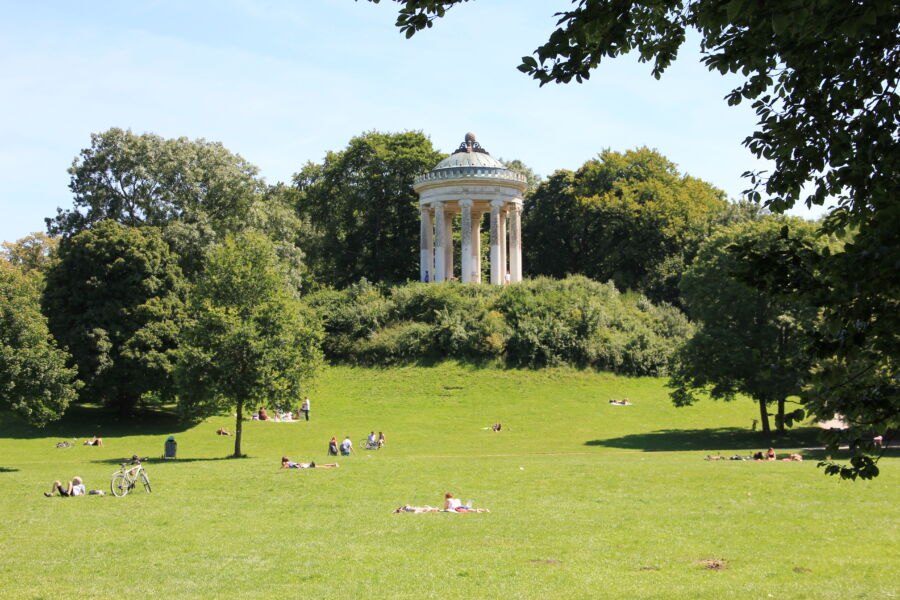
Marienplatz forms the heart of Munich, dominated by the Neo-Gothic New Town Hall with its famous Glockenspiel. Nearby, the Frauenkirche cathedral’s distinctive twin domes define the city skyline.
The English Garden, one of the world’s largest urban parks, offers peaceful respite from city life. Visitors can watch surfers ride the Eisbach wave or enjoy a beer at the Chinese Tower beer garden.
Must-see Munich attractions:
- The Residenz Palace complex
- Nymphenburg Palace and Gardens
- BMW World and Museum
- Deutsches Museum (science and technology)
- Pinakothek art museums
The Viktualienmarkt food market delights with fresh produce and Bavarian specialties. For sports enthusiasts, Allianz Arena, home to FC Bayern Munich, offers tours of its striking, illuminated exterior and interior.
Local Cuisine and Beer Gardens

Bavarian cuisine reigns supreme in Munich, with hearty dishes that satisfy hungry travelers. Weisswurst (white sausage) served with sweet mustard, and pretzels makes the perfect traditional breakfast. Other local favorites include schnitzel, spätzle (egg noodles), and schweinshaxe (roasted pork knuckle).
Beer is practically its food group in Munich. The city has followed the Reinheitsgebot (German Beer Purity Law) since 1516, ensuring high-quality brews. The six main breweries—Augustiner, Paulaner, Hacker-Pschorr, Spaten, Löwenbräu, and Hofbräu—produce excellent varieties.
Beer gardens represent Munich’s social heart, especially in summer. The Hofbräuhaus, dating to 1589, remains the world’s most famous beer hall. Locals and tourists enjoy sitting at communal tables, drinking from liter steins, and soaking in the gemütlichkeit (cozy atmosphere) that defines Munich’s unique charm.
Exploring Berchtesgaden
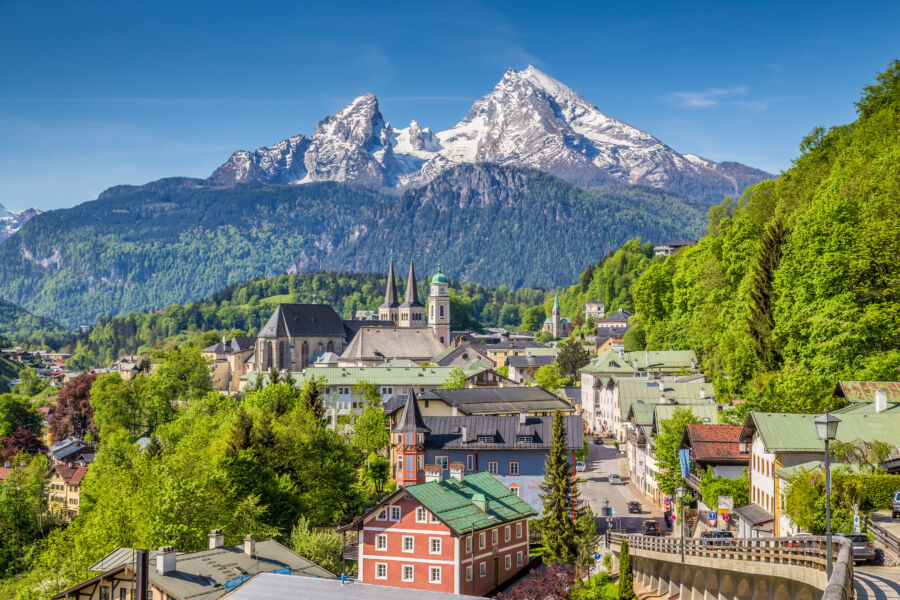
Berchtesgaden is a charming Bavarian town nestled in the German Alps, offering visitors a perfect blend of natural beauty, rich history, and outdoor adventures. This picturesque destination, surrounded on three sides by Austria, features stunning mountain landscapes and a quaint medieval town center.
Berchtesgaden National Park

Berchtesgaden National Park is one of Germany’s most breathtaking natural treasures. The park spans approximately 210 square kilometers and features the stunning Königssee, an emerald-green lake surrounded by towering mountain peaks. The famous lake boat tour takes visitors to St. Bartholomä, a picturesque red-domed church that has become an iconic symbol of the region.
The mighty Watzmann mountain dominates the park’s landscape, representing Germany’s third-highest peak. Hikers can explore numerous well-marked trails ranging from easy walks to challenging alpine routes.
Wildlife enthusiasts might spot alpine creatures like chamois, alpine ibex, and golden eagles. The park’s pristine condition makes it a haven for rare plant species that thrive in the alpine environment.
Visitors should plan at least a half-day to explore the park’s main attractions, though nature lovers could easily spend several days discovering its hidden gems.
Historical Landmarks
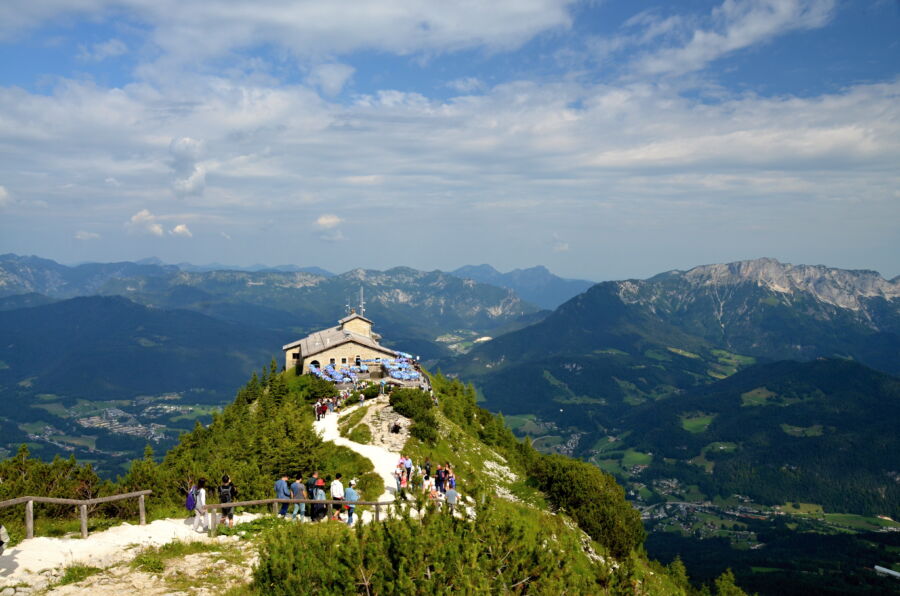
The Eagle’s Nest (Kehlsteinhaus) is Berchtesgaden’s most famous historical site. This mountaintop building was constructed as a Nazi meeting house and presented to Hitler for his 50th birthday. Today, it’s a restaurant and viewpoint offering spectacular panoramic vistas of the Alps.
To reach the Eagle’s Nest, visitors take a special bus up a steep road, followed by a ride in a brass elevator built into the mountain. Its historical significance, combined with its dramatic location, makes it a must-see.
The town’s medieval center features charming Bavarian architecture, colorful buildings, and the Königliches Schloss (Royal Palace). This former Augustinian monastery later became a royal hunting lodge.
Dokumentation Obersalzberg provides insights into the darker aspects of the area’s history, thoughtfully examining its connection to the Third Reich with exhibits.
Outdoor Activities
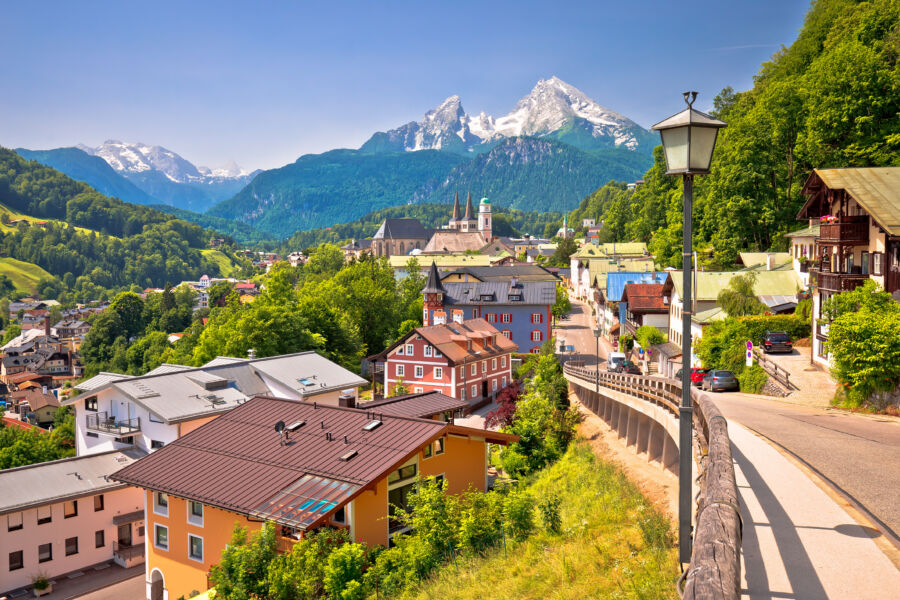
Berchtesgaden’s alpine setting makes it perfect for outdoor enthusiasts year-round. In winter, the area transforms into a snowy playground with several ski areas catering to different skill levels. The Jenner ski area offers groomed slopes and off-piste opportunities with breathtaking views.
Summer brings excellent hiking opportunities on well-maintained trails. The Watzmann circuit is popular among experienced hikers, while families enjoy gentler paths around Königssee and through flower-filled meadows.
Mountain biking routes range from leisurely valley rides to challenging mountain descents. Paragliding is another popular activity, giving adventurous visitors a bird’s-eye view of the spectacular landscape.
The historic salt mine (Salzbergwerk) offers a unique underground adventure. Visitors don miners’ clothing, ride wooden slides, and cross an underground salt lake on a raft. It’s a fun, educational activity suitable for families with children.
See Related: Germany Trip Cost: Budget-Friendly 7-Day Adventure Under €1000
Transportation Options
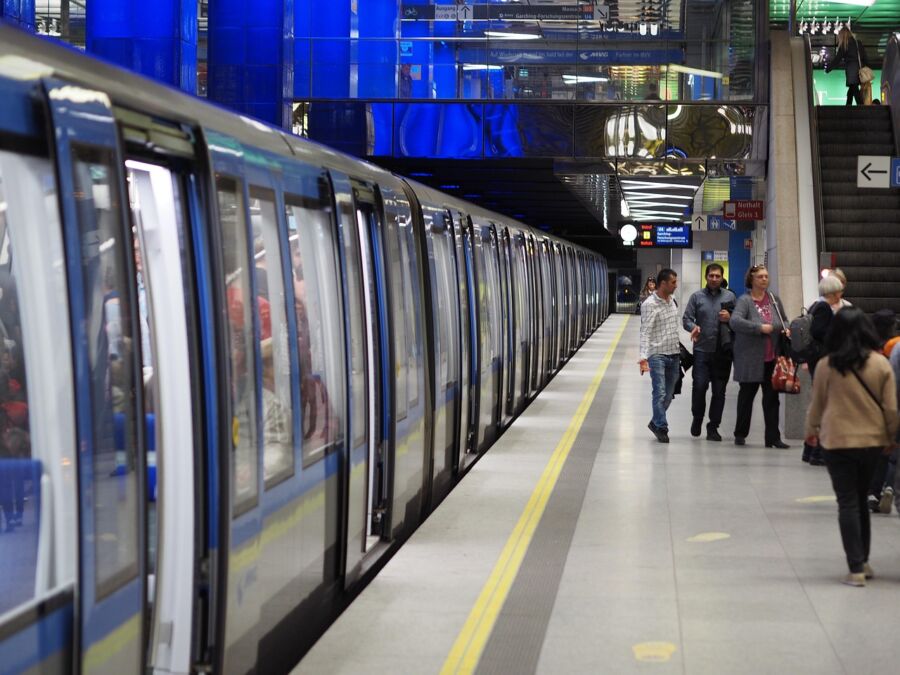
Getting around Bavaria efficiently involves understanding the different travel methods between Munich and Berchtesgaden. The region offers excellent public transportation and options for those who prefer driving.
Train Travel in Bavaria
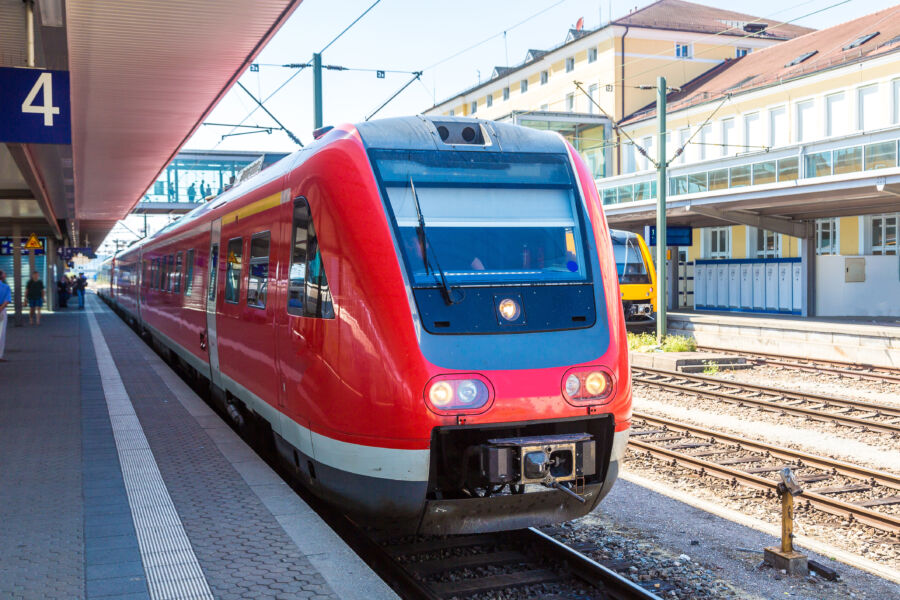
The train connection between Munich and Berchtesgaden is reliable and scenic. The journey takes approximately 2 hours and 16 minutes, regardless of departure time. This option is ideal for travelers who want to relax and enjoy Bavaria’s gorgeous landscapes without worrying about navigation.
Deutsche Bahn operates regular services on this route. Trains depart from Munich’s main station (Hauptbahnhof) and take you directly to Berchtesgaden.
No car is needed to travel between major points in Bavaria by train. This can save you from parking fees, which can be quite steep in tourist areas like Berchtesgaden and Salzburg.
Train tickets are best purchased in advance, especially during peak travel seasons when trains might fill up quickly.
Bus Networks
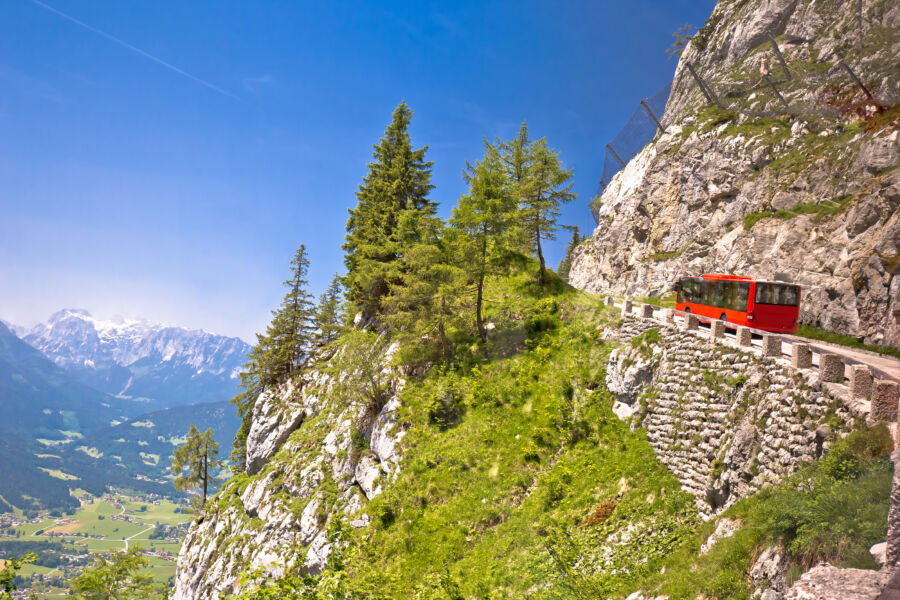
Bus services provide another affordable option for traveling between Munich and Berchtesgaden. The cheapest routes cost around $19 and complement the train network perfectly.
Regional buses connect smaller towns and attractions that might not be directly accessible by train. They can reach specific hiking trails or viewpoints around Berchtesgaden National Park.
The bus system integrates well with trains, making it possible to combine both for the most efficient journey. Many buses time their schedules to coordinate with train arrivals.
Buses offer flexible options for day trips to Salzburg and Berchtesgaden. However, visiting both locations in a single day might be rushed—many travelers recommend focusing on one destination.
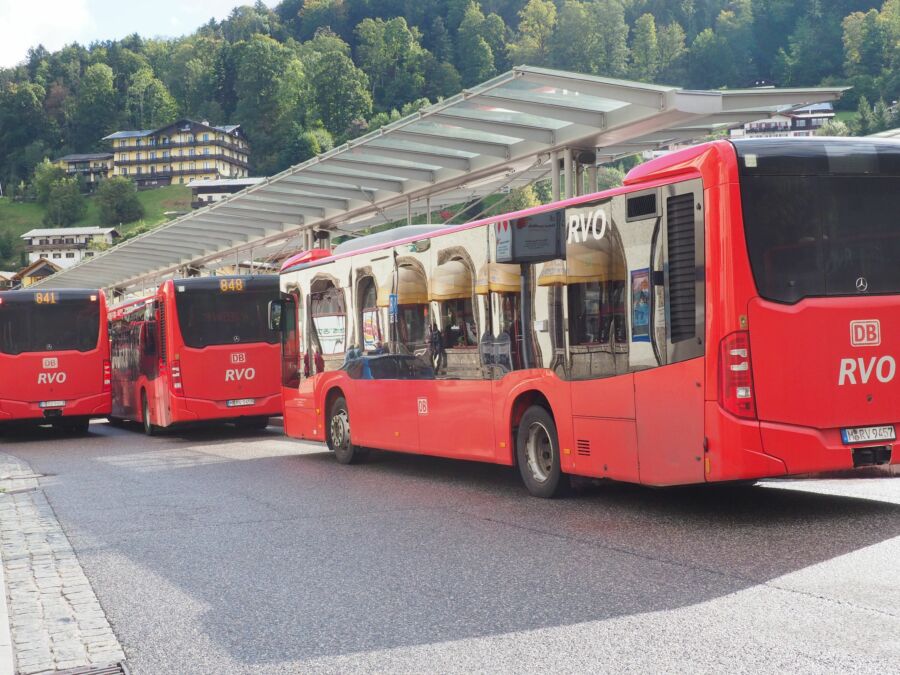
Once in Berchtesgaden, local buses provide access to major attractions like Eagle’s Nest and Königssee. These run frequently during tourist season but may have limited schedules in winter.
Munich’s extensive public transport system includes underground trains, trams, and buses, making getting around the city straightforward. A single ticket or day pass covers all these options.
Public transportation is ideal for travelers visiting pedestrian zones in either location. Most historic town centers restrict vehicle access, making trains and buses more convenient.
Taxis and rideshare services are available in both cities but are significantly more expensive than public transportation. They’re best used when buses or trains aren’t practical.
Accommodation and Lodging
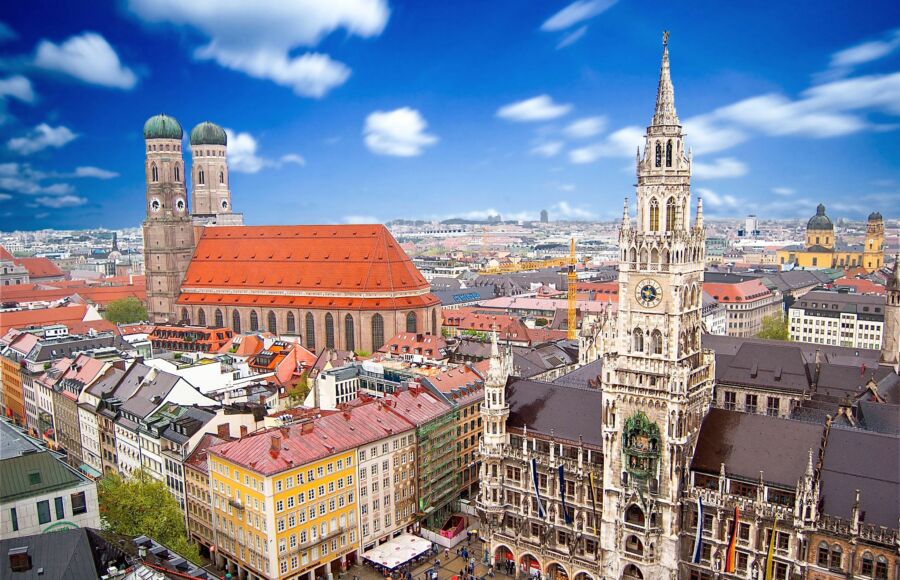
When choosing where to stay in Bavaria, Munich and Berchtesgaden offer different lodging experiences at varying prices. Munich provides urban convenience, while Berchtesgaden delivers peaceful mountain retreats with stunning natural views.
Staying in Munich
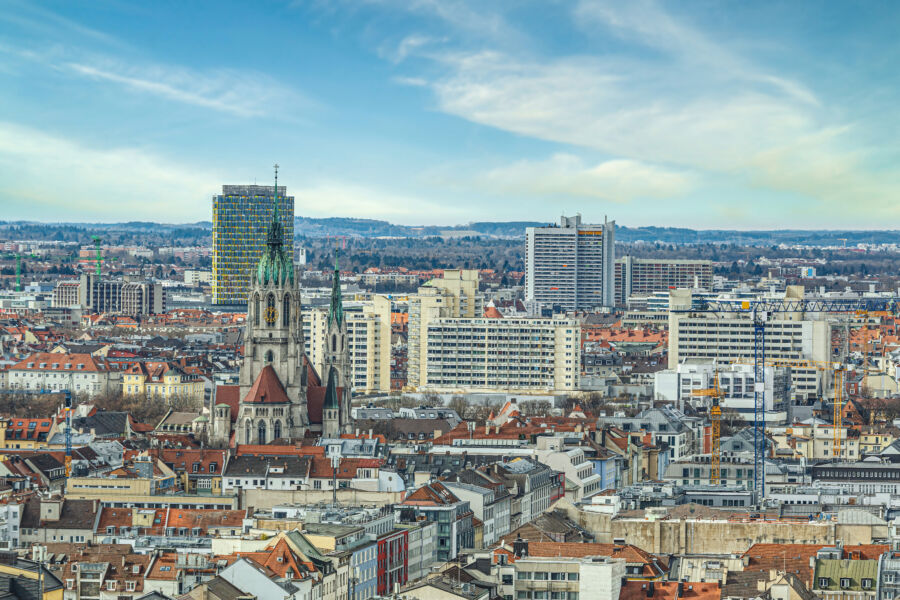
Munich accommodations cater to all budgets but generally come at a premium compared to smaller Bavarian towns. The city center (Altstadt) features luxury hotels like Hotel Bayerischer Hof and Mandarin Oriental, perfect for travelers who want to be steps from Marienplatz and major attractions.
Mid-range options flourish in neighborhoods like Schwabing and Haidhausen, offering good value while remaining close to public transportation. Booking.com lists numerous boutique hotels in these areas under €150 per night.
Budget travelers should look to hostels in the University district or consider apartments in residential areas. During Oktoberfest, prices skyrocket across all accommodation types, so book months in advance if visiting during this period.
Many Munich hotels offer excellent breakfast buffets included in the rate – a nice bonus before a day of sightseeing.
Berchtesgaden Retreats
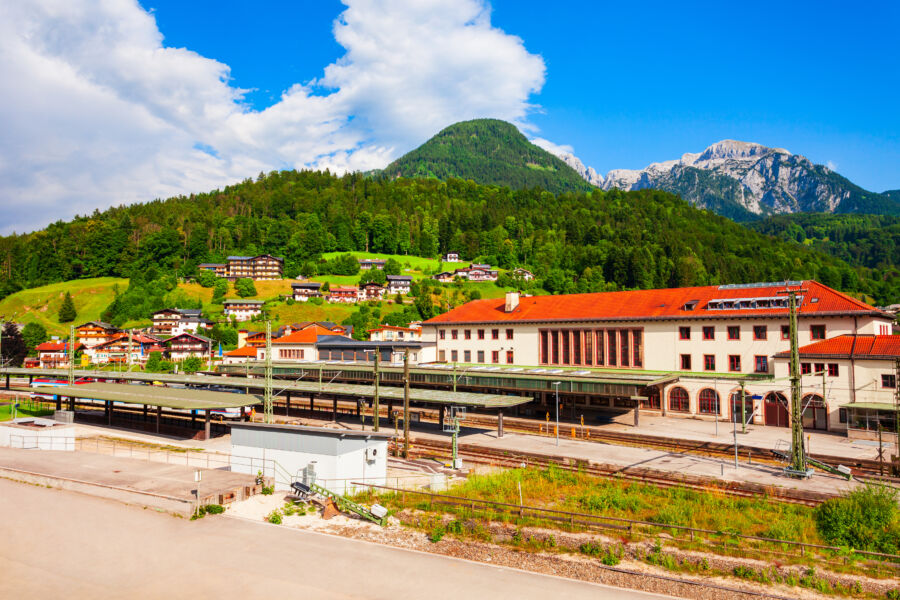
Berchtesgaden lodging delivers exceptional value compared to Munich prices. The search results indicate that “lodging is on average cheaper and better bang for your buck in Berchtesgaden,” with Hotel Bavaria as a recommended option.
For a luxury mountain experience, the Kempinski Berchtesgaden offers five-star amenities with panoramic Alpine views. Mid-range family-run guesthouses and small hotels dominate the market, many featuring traditional Bavarian architecture and homemade breakfast spreads.
Many visitors stay in Berchtesgaden for 2-4 nights, using it as a base to explore Berchtesgaden National Park – described as a “must-visit” destination in Germany. The town is characterized as a “nice, quiet” place with worthwhile attractions.
Vacation rentals and apartments work well for longer stays or families who want kitchen facilities. Booking early is essential during the summer hiking season and winter skiing months, as the best properties fill quickly.
Day Trips and Excursions

Munich and Berchtesgaden are excellent bases for exploring Bavaria and the surrounding areas. The region offers stunning Alpine landscapes, historic sites, and charming villages for perfect day adventures.
From Munich to the Countryside

Munich’s central location makes it ideal for exploring Bavaria’s treasures. Berchtesgaden is a popular destination, though it is about two hours by train or car and requires an early start for a day trip. Many travelers book guided tours to Berchtesgaden to avoid transportation hassles.
Garmisch-Partenkirchen, just an hour south of Munich, offers a closer Alpine experience. This garrison town provides easier access to mountain views when time is limited. The trip works well even for half-day adventures.
Salzburg, Austria, sits just 1.5 hours from Munich, making it perfect for history buffs seeking a day trip. The birthplace of Mozart features baroque architecture and fortress views that contrast nicely with Munich’s Bavarian charm.
Berchtesgaden to Surrounding Regions
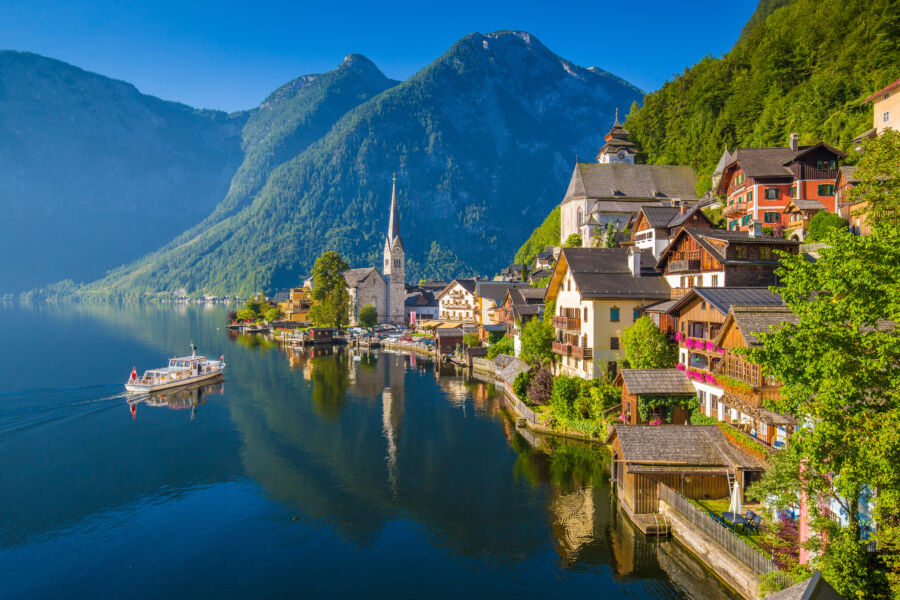
Staying in Berchtesgaden provides exceptional access to Alpine wonders. The town is a launch point for exploring Eagle’s Nest (Kehlsteinhaus) and Königssee, both of which are reachable within 30 minutes.
Salzburg is merely 30 minutes from Berchtesgaden, making it an easy day trip in reverse. Many visitors in Berchtesgaden enjoy popping over to experience Austrian culture before returning to their Bavarian mountain retreat.
Hallstatt in Austria is a memorable excursion for those with a full day to spare. This picturesque lakeside village is about 2.5 hours from Berchtesgaden. The UNESCO World Heritage site features 16th-century Alpine houses perched between mountains and lakes.
Local buses connect most attractions in the Berchtesgaden area, making a rental car optional for nearby explorations.
See Related: Munich vs Vienna: Stunning Differences Between These Historic European Capitals for Travelers
Local Experiences
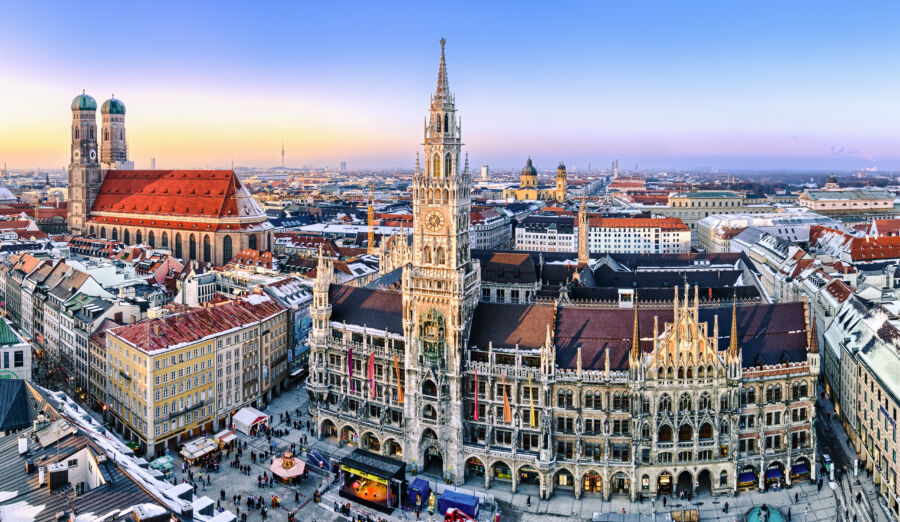
When visiting Bavaria, the local experiences in Munich and Berchtesgaden offer different flavors of German culture. Each destination provides unique ways to immerse yourself in authentic Bavarian life.
Exploring Munich’s Beer Gardens
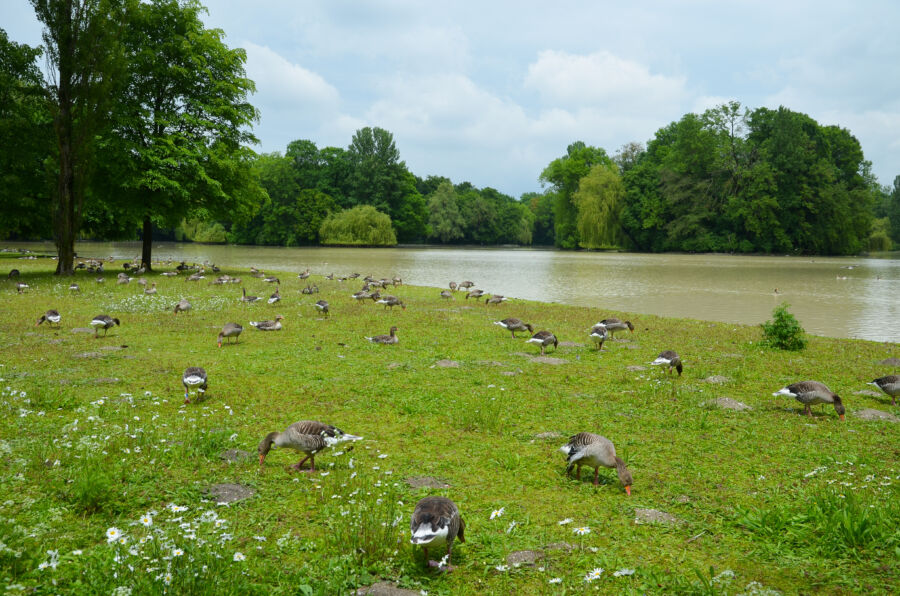
Munich’s beer gardens are more than just places to drink—they’re social institutions. The city boasts over 100 beer gardens where locals and tourists mix freely. Englischer Garten houses one of the most famous spots, the Chinese Tower Beer Garden, where you can enjoy a Mass (liter) of beer under chestnut trees.
Most gardens allow visitors to bring their food; only beverages must be purchased on-site. This custom dates back centuries!
These gardens buzz with activity during the summer months. Locals often stop by after work for a quick beer and pretzel.
The atmosphere is casual and friendly. Don’t be surprised if strangers invite you to join their table—it’s part of the beer garden culture.
Berchtesgaden’s Unique Offerings
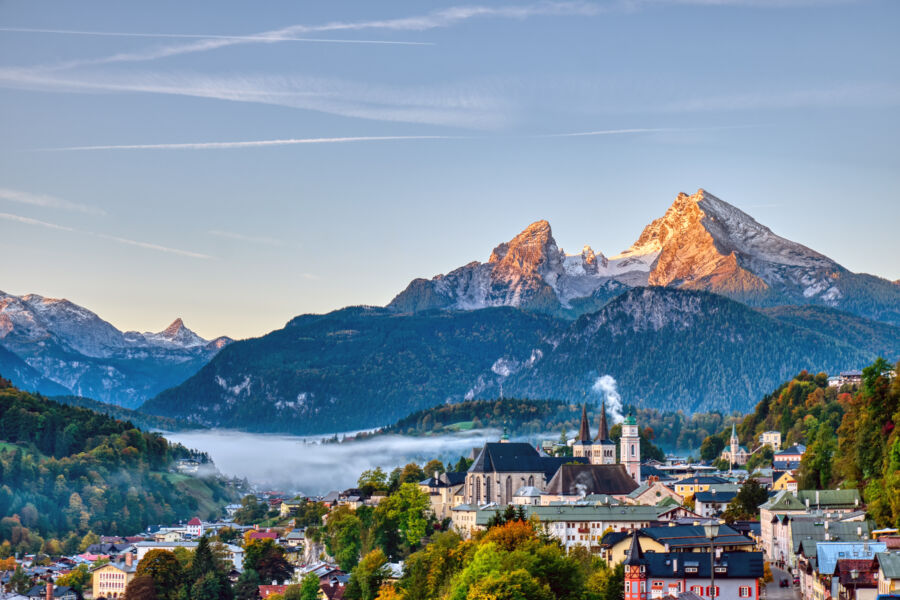
Berchtesgaden delivers authentic Alpine experiences you won’t find in bigger cities. The town feels genuinely Bavarian, with fewer tourists than Munich or Salzburg.
Salt mine tours offer a glimpse into the region’s historic industry. Visitors don miner’s clothes and ride wooden slides deep into the mountain. It’s both educational and surprisingly fun!
The local cemetery, while somber, provides fascinating insights into the area’s WWI and WWII history with hundreds of memorials.
Berchtesgaden’s smaller size allows for more meaningful connections with locals. Residents often greet visitors warmly in shops and restaurants.
Mountain huts (Berghütten) dot the surrounding peaks. These rustic lodges serve hearty meals to hikers and offer a uniquely Alpine social experience that contrasts with Munich’s urban vibe.
Weather and Climate

Due to their locations, the weather patterns in Munich and Berchtesgaden differ significantly. Munich experiences a typical continental climate, while Berchtesgaden’s mountain setting creates more extreme and variable conditions.
Best Time to Visit Munich

Munich’s climate is characterized by cold winters and mild summers. As Bavaria’s capital, it’s often considered Germany’s coldest major city, with temperatures frequently dropping below freezing during winter. I visited in February and needed serious winter gear!
June through August offer the warmest weather and sunshine hours, making summer ideal for outdoor activities like exploring the English Garden or enjoying beer gardens. Average summer temperatures hover between 18-25°C (64-77°F).
Though rain showers are common, Spring (April-May) brings colorful blooms and fewer tourists. Fall offers beautiful foliage and the famous Oktoberfest celebrations, but pack layers as temperatures cool quickly.
Rainy days are common year-round in Munich, so always bring an umbrella. The city offers plenty of indoor activities for wet weather, including world-class museums and cozy cafés.
Berchtesgaden’s Seasons
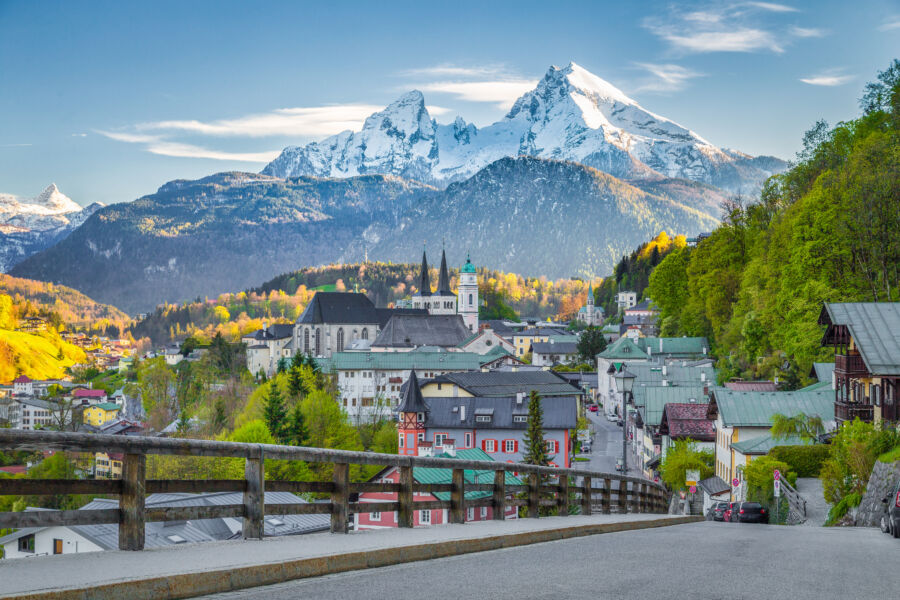
Berchtesgaden’s mountain location creates a more extreme climate than Munich’s. The alpine setting means cooler temperatures year-round and significantly more precipitation, especially in spring and summer.
Winter transforms Berchtesgaden into a snow-covered wonderland from December through March. This makes it perfect for skiing and winter sports, though temperatures can drop quite low. The scenery is breathtaking with snow-capped peaks!
Summer (June-August) offers pleasant hiking weather but be prepared for afternoon thunderstorms and quick weather changes. The mountain location means clouds and rain are common even in summer – a stark contrast to sunnier German regions.
Fall brings spectacular mountain foliage but increasingly unpredictable weather. Spring sees beautiful wildflowers but comes with frequent rain showers that can dampen outdoor plans.
If visiting primarily for outdoor activities, check weather forecasts carefully. Bad weather in Berchtesgaden can severely limit sightseeing options compared to Munich.
Insider Tips and Recommendations

When visiting Munich, skip the peak tourist hours at Marienplatz. The famous Glockenspiel show happens at 11 a.m. and noon, but watching at 5 p.m. (summer only) means smaller crowds.
For an authentic Munich experience, check out the Augustiner-Keller beer garden. Locals bring their food but buy the beer – it’s allowed and saves money!
The best views of Munich are free from St. Peter’s Church tower. It’s a 306-step climb, but it’s worth it for panoramic city views without the crowds of the Olympic Tower.
In Berchtesgaden, most tourists head straight to Eagle’s Nest. Go early (before 10 a.m.) or late afternoon to avoid tour buses. Better yet, visit on slightly cloudy days when fewer people visit.
Many visitors miss Berchtesgaden’s salt mines. The underground boat ride and wooden slides make it fun for all ages. Wear warm clothes – it’s chilly even in summer!
For nature lovers, hike the Watzmann-Ostwand trail in Berchtesgaden National Park. It’s less crowded than popular routes but offers stunning alpine scenery.
Animal fans might spot wild mountain cats in Berchtesgaden’s forests! They’re rare but native to the region. Early morning hiking increases your chances.
Public transportation is excellent in both locations. The Bayern Ticket saves money for day trips from Munich, while Berchtesgaden’s bus network connects all major attractions.
Both destinations are worth visiting year-round, but May and September offer pleasant weather with fewer tourists and lower prices.
See Related: Munich vs Innsbruck: Key Differences to Know Before Your Alpine Adventure
Frequently Asked Questions

Travelers often face tough choices when planning a visit to Bavaria. Munich and Berchtesgaden offer distinctly different experiences that appeal to various types of tourists, from city lovers to nature enthusiasts.
What are the main differences between sightseeing opportunities in Munich and Berchtesgaden?
Munich offers world-class museums, historic architecture, and vibrant urban culture. Visitors can explore the Deutsches Museum, Pinakothek art galleries, and the iconic Marienplatz with its famous Glockenspiel.
Berchtesgaden, by contrast, focuses on natural beauty with stunning Alpine landscapes. The area features Lake Königssee, salt mines, and breathtaking mountain views that attract outdoor enthusiasts.
The pace differs significantly, too. Munich provides a bustling city experience,e while Berchtesgaden offers a more relaxed, nature-immersed atmosphere.
Is staying in Munich or Berchtesgaden better for a more authentic Bavarian experience?
This depends entirely on what kind of “authentic” Bavaria a traveler seeks. Munich provides a sophisticated urban Bavarian experience with traditional beer halls, markets, and city traditions.
Berchtesgaden delivers rural Bavarian charm with smaller villages, alpine traditions, and a closer connection to nature. The pace is slower, and visitors might encounter more locals going about daily routines.
Many travel experts recommend experiencing both to get the complete picture of Bavarian culture and lifestyle.
What transportation options are available for traveling between Munich and Berchtesgaden?
Train travel is highly convenient. Regional trains connect Munich and Berchtesgaden in approximately 2-2.5 hours. The Bavaria Pass offers an economical option for this journey on regional trains.
Driving takes roughly 1.5-2 hours along well-maintained highways, giving travelers the flexibility to stop at points of interest along the way. A car rental is particularly useful for exploring the Berchtesgaden area.
Bus connections exist but aren’t as frequent or convenient as trains. Some tourists opt for guided day tours from Munich, though these often feel rushed given the distance.
How does the historical significance of Munich compare to that of Berchtesgaden?
Munich’s history spans centuries as Bavaria’s capital, showcasing medieval, Renaissance, and modern German history. The city features historical sites related to Bavarian royalty, World War II, and German reunification.
Berchtesgaden has a more specific historical focus, particularly its connection to the Third Reich. Hitler’s Eagle’s Nest retreat and the Documentation Center create a sobering historical experience.
Both locations offer important but distinctly different windows into German history.
Can one easily visit the Eagle’s Nest in Munich, or is Berchtesgaden a better base?
It is possible but challenging to visit Eagle’s Nest from Munich as a day trip. The journey takes about 2 hours, leaving limited time at the destination.
Berchtesgaden serves as a far better base for exploring the Eagle’s Nest. Staying locally allows visitors to arrive early, beating crowds and having more time to appreciate the historical significance and stunning views.
Most travel forums recommend at least an overnight stay in Berchtesgaden for those keen on properly experiencing Eagle’s Nest and the surrounding area.
What unique cultural experiences can one expect when choosing between a stay in Munich and Berchtesgaden?
Munich delivers classic Bavarian urban culture. It has beer gardens, a Viktualienmarkt food market, and seasonal festivals. The city offers a cosmopolitan atmosphere while still maintaining traditional Bavarian elements.
Berchtesgaden provides insight into rural Alpine culture. In this smaller community setting, visitors can experience local customs more intimately and learn about traditional farming practices, folk music, and crafts.
Food experiences differ, too. Munich boasts diverse dining options, from traditional to international, while Berchtesgaden specializes in authentic mountain cuisine. It also has family-run restaurants serving generations-old recipes.



